43 papers:
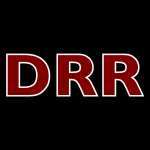 DRR-2015-StalnakerZ #retrieval #using
DRR-2015-StalnakerZ #retrieval #using- Math expression retrieval using an inverted index over symbol pairs (DS, RZ), p. 940207.
 ITiCSE-2015-LewisKMS
ITiCSE-2015-LewisKMS- The Exploring Computer Science Course, Attendance and Math Achievement (DWL, LK, TM, MS), pp. 147–152.
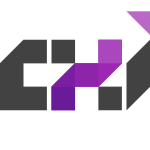 CHI-2015-Clarke #design
CHI-2015-Clarke #design- The Work of Mad Men that Makes the Methods of Math Men Work: Practically Occasioned Segment Design (MFC), pp. 3275–3284.
 LCT-2015-SalinasQS #assessment
LCT-2015-SalinasQS #assessment- Math and Motion: A (Coursera) MOOC to Rethink Math Assessment (PS, EQ, XS), pp. 313–324.
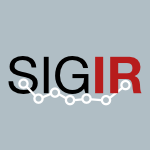 SIGIR-2015-SchubotzYMC #challenge #information retrieval #wiki
SIGIR-2015-SchubotzYMC #challenge #information retrieval #wiki- Challenges of Mathematical Information Retrievalin the NTCIR-11 Math Wikipedia Task (MS, AY, VM, HSC), pp. 951–954.
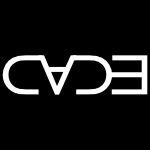 CADE-2015-ZulkoskiGC #algebra #named #satisfiability
CADE-2015-ZulkoskiGC #algebra #named #satisfiability- MathCheck: A Math Assistant via a Combination of Computer Algebra Systems and SAT Solvers (EZ, VG, KC), pp. 607–622.
 CAV-2015-SebastianiT #modulo theories #named #optimisation
CAV-2015-SebastianiT #modulo theories #named #optimisation- OptiMathSAT: A Tool for Optimization Modulo Theories (RS, PT), pp. 447–454.
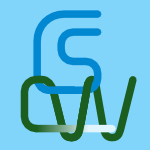 CSCW-2014-TausczikKK #case study #collaboration #problem
CSCW-2014-TausczikKK #case study #collaboration #problem- Collaborative problem solving: a study of MathOverflow (YRT, AK, REK), pp. 355–367.
 LCT-NLE-2014-UzunosmanogluC #collaboration #learning #online #paradigm
LCT-NLE-2014-UzunosmanogluC #collaboration #learning #online #paradigm- Examining an Online Collaboration Learning Environment with the Dual Eye-Tracking Paradigm: The Case of Virtual Math Teams (SDU, MPÇ), pp. 462–472.
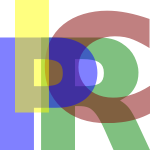 ICPR-2014-AlvaroSB #network
ICPR-2014-AlvaroSB #network- Offline Features for Classifying Handwritten Math Symbols with Recurrent Neural Networks (FA, JAS, JMB), pp. 2944–2949.
 SIGIR-2014-ReichenbachAZ #assessment
SIGIR-2014-ReichenbachAZ #assessment- Rendering expressions to improve accuracy of relevance assessment for math search (MSR, AA, RZ), pp. 851–854.
 SIGIR-2014-WangariZA #case study #interface #multimodal
SIGIR-2014-WangariZA #case study #interface #multimodal- Discovering real-world use cases for a multimodal math search interface (KDVW, RZ, AA), pp. 947–950.
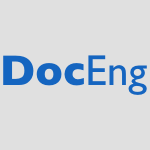 DocEng-2013-AlvaroZ #layout
DocEng-2013-AlvaroZ #layout- A shape-based layout descriptor for classifying spatial relationships in handwritten math (FA, RZ), pp. 123–126.
 DRR-2013-ZanibbiMV #graph #pattern matching #pattern recognition #recognition
DRR-2013-ZanibbiMV #graph #pattern matching #pattern recognition #recognition- Evaluating structural pattern recognition for handwritten math via primitive label graphs (RZ, HM, CVG).
 DRR-2013-ZhuHZ #image #recognition #retrieval #using
DRR-2013-ZhuHZ #image #recognition #retrieval #using- Rotation-robust math symbol recognition and retrieval using outer contours and image subsampling (SZ, LH, RZ).
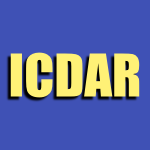 ICDAR-2013-HuZ #multi #using
ICDAR-2013-HuZ #multi #using- Segmenting Handwritten Math Symbols Using AdaBoost and Multi-scale Shape Context Features (LH, RZ), pp. 1180–1184.
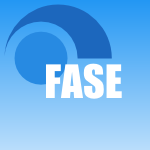 FASE-2013-SanthiarPK #api #mining #testing
FASE-2013-SanthiarPK #api #mining #testing- Discovering Math APIs by Mining Unit Tests (AS, OP, AK), pp. 327–342.
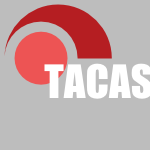 TACAS-2013-CimattiGSS #smt
TACAS-2013-CimattiGSS #smt- The MathSAT5 SMT Solver (AC, AG, BJS, RS), pp. 93–107.
 DUXU-CXC-2013-EugeneBW #design #game studies
DUXU-CXC-2013-EugeneBW #design #game studies- Math Fluency through Game Design (WE, TB, JW), pp. 189–198.
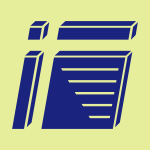 ICEIS-v1-2013-LeiteMP #fault #multi
ICEIS-v1-2013-LeiteMP #fault #multi- Multiple External Representations in Remediation of Math Errors (MDL, DM, ARP), pp. 519–523.
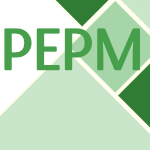 PEPM-2012-Puschel #compilation #performance
PEPM-2012-Puschel #compilation #performance- Compiling math to fast code (MP), pp. 1–2.
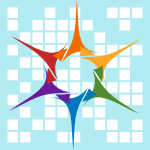 CIKM-2012-NguyenCH
CIKM-2012-NguyenCH- A math-aware search engine for math question answering system (TTN, KC, SCH), pp. 724–733.
 ICDAR-2011-ZanibbiY #documentation #image #query #using
ICDAR-2011-ZanibbiY #documentation #image #query #using- Math Spotting: Retrieving Math in Technical Documents Using Handwritten Query Images (RZ, LY), pp. 446–451.
 ICEIS-HCI-2010-DiosERR #collaboration #learning
ICEIS-HCI-2010-DiosERR #collaboration #learning- Virtual and Collaborative Environment for Learning Maths (AQD, AHE, IVR, ÁMdR), pp. 86–90.
 ICEIS-HCI-2010-LeiteGPSCBS #education #interface
ICEIS-HCI-2010-LeiteGPSCBS #education #interface- A User-interface Environment as a Support in Maths Teaching for Deaf Children (MDL, LSG, ARP, MSS, MAC, LCEB, FS), pp. 79–85.
 ICEIS-J-2010-DiosERR10a #collaboration #student
ICEIS-J-2010-DiosERR10a #collaboration #student- A Virtual Collaborative Environment Helps University Students to Learn Maths (AQD, AHE, IVR, ÁMdR), pp. 600–606.
 ICDAR-2009-LapointeB #case study #evaluation #performance #recognition
ICDAR-2009-LapointeB #case study #evaluation #performance #recognition- Issues in Performance Evaluation: A Case Study of Math Recognition (AL, DB), pp. 1355–1359.
 ICPR-2008-ShiS #graph #recognition
ICPR-2008-ShiS #graph #recognition- A symbol graph based handwritten math expression recognition (YS, FKS), pp. 1–4.
 CAV-2008-BruttomessoCFGS #smt
CAV-2008-BruttomessoCFGS #smt- The MathSAT 4SMT Solver (RB, AC, AF, AG, RS), pp. 299–303.
 OCSC-2007-ZhouS #behaviour #collaboration #community #towards
OCSC-2007-ZhouS #behaviour #collaboration #community #towards- Towards Building a Math Discourse Community: Investigating Collaborative Information Behavior (NZ, GS), pp. 509–518.
 SIGIR-2006-MunavalliM #named
SIGIR-2006-MunavalliM #named- MathFind: a math-aware search engine (RM, RM), p. 735.
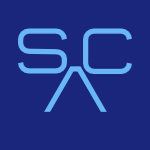 SAC-2006-ErshovNM #architecture #precise
SAC-2006-ErshovNM #architecture #precise- Quad and correctly rounded double precision math functions: portable and optimized for Intel architectures (AE, AN, SM), pp. 1310–1317.
 SAC-2006-MandalCDC #detection #documentation #image #segmentation
SAC-2006-MandalCDC #detection #documentation #image #segmentation- Detection and segmentation of tables and math-zones from document images (SM, SPC, AKD, BC), pp. 841–846.
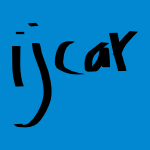 IJCAR-2006-ZimmerA #reasoning #semantics #web
IJCAR-2006-ZimmerA #reasoning #semantics #web- The MathServe System for Semantic Web Reasoning Services (JZ, SA), pp. 140–144.
 CADE-2005-BozzanoBCJRSS
CADE-2005-BozzanoBCJRSS- The MathSAT 3 System (MB, RB, AC, TAJ, PvR, SS, RS), pp. 315–321.
 ICDAR-2003-ChowdhuryMDC #automation #documentation #image #segmentation
ICDAR-2003-ChowdhuryMDC #automation #documentation #image #segmentation- Automated Segmentation of Math-Zones from Document Images (SPC, SM, AKD, BC), pp. 755–759.
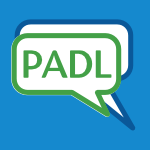 PADL-2003-TomasL #generative
PADL-2003-TomasL #generative- A CLP-Based Tool for Computer Aided Generation and Solving of Maths Exercises (APT, JPL), pp. 223–240.
 SAC-2003-KellarMZWKB #architecture #composition
SAC-2003-KellarMZWKB #architecture #composition- Architecture to Support Dynamic Composition of Math Lesson Plans (MK, BM, RZ, CRW, DK, JMB), pp. 569–574.
 CADE-2002-ZimmerK #distributed #reasoning
CADE-2002-ZimmerK #distributed #reasoning- System Description: The MathWeb Software Bus for Distributed Mathematical Reasoning (JZ, MK), pp. 139–143.
 ITiCSE-2000-KelemenTHAB #education
ITiCSE-2000-KelemenTHAB #education- Has our curriculum become math-phobic? (an American perspective) (CK, ABT, PH, OLA, KBB), pp. 132–135.
 ITiCSE-1999-Taylor99a #education #learning
ITiCSE-1999-Taylor99a #education #learning- Math link: linking curriculum, instructional strategies, and technology to enhance teaching and learning (HGT), p. 201.
 CADE-1999-FrankeK #automation #communication #distributed #proving #theorem proving
CADE-1999-FrankeK #automation #communication #distributed #proving #theorem proving- System Description: MathWeb, an Agent-Based Communication Layer for Distributed Automated Theorem Proving (AF, MK), pp. 217–221.
 CC-1992-ViklundHF #implementation #programming
CC-1992-ViklundHF #implementation #programming- The Implementation of ObjectMath — a High-Level Programming Environment for Scientific Computing (LV, JH, PF), pp. 312–318.
 DRR-2015-StalnakerZ #retrieval #using
DRR-2015-StalnakerZ #retrieval #using ITiCSE-2015-LewisKMS
ITiCSE-2015-LewisKMS CHI-2015-Clarke #design
CHI-2015-Clarke #design LCT-2015-SalinasQS #assessment
LCT-2015-SalinasQS #assessment SIGIR-2015-SchubotzYMC #challenge #information retrieval #wiki
SIGIR-2015-SchubotzYMC #challenge #information retrieval #wiki CADE-2015-ZulkoskiGC #algebra #named #satisfiability
CADE-2015-ZulkoskiGC #algebra #named #satisfiability CAV-2015-SebastianiT #modulo theories #named #optimisation
CAV-2015-SebastianiT #modulo theories #named #optimisation CSCW-2014-TausczikKK #case study #collaboration #problem
CSCW-2014-TausczikKK #case study #collaboration #problem LCT-NLE-2014-UzunosmanogluC #collaboration #learning #online #paradigm
LCT-NLE-2014-UzunosmanogluC #collaboration #learning #online #paradigm ICPR-2014-AlvaroSB #network
ICPR-2014-AlvaroSB #network SIGIR-2014-ReichenbachAZ #assessment
SIGIR-2014-ReichenbachAZ #assessment SIGIR-2014-WangariZA #case study #interface #multimodal
SIGIR-2014-WangariZA #case study #interface #multimodal DocEng-2013-AlvaroZ #layout
DocEng-2013-AlvaroZ #layout DRR-2013-ZanibbiMV #graph #pattern matching #pattern recognition #recognition
DRR-2013-ZanibbiMV #graph #pattern matching #pattern recognition #recognition DRR-2013-ZhuHZ #image #recognition #retrieval #using
DRR-2013-ZhuHZ #image #recognition #retrieval #using ICDAR-2013-HuZ #multi #using
ICDAR-2013-HuZ #multi #using FASE-2013-SanthiarPK #api #mining #testing
FASE-2013-SanthiarPK #api #mining #testing TACAS-2013-CimattiGSS #smt
TACAS-2013-CimattiGSS #smt DUXU-CXC-2013-EugeneBW #design #game studies
DUXU-CXC-2013-EugeneBW #design #game studies ICEIS-v1-2013-LeiteMP #fault #multi
ICEIS-v1-2013-LeiteMP #fault #multi PEPM-2012-Puschel #compilation #performance
PEPM-2012-Puschel #compilation #performance CIKM-2012-NguyenCH
CIKM-2012-NguyenCH ICDAR-2011-ZanibbiY #documentation #image #query #using
ICDAR-2011-ZanibbiY #documentation #image #query #using ICEIS-HCI-2010-DiosERR #collaboration #learning
ICEIS-HCI-2010-DiosERR #collaboration #learning ICEIS-HCI-2010-LeiteGPSCBS #education #interface
ICEIS-HCI-2010-LeiteGPSCBS #education #interface ICEIS-J-2010-DiosERR10a #collaboration #student
ICEIS-J-2010-DiosERR10a #collaboration #student ICDAR-2009-LapointeB #case study #evaluation #performance #recognition
ICDAR-2009-LapointeB #case study #evaluation #performance #recognition ICPR-2008-ShiS #graph #recognition
ICPR-2008-ShiS #graph #recognition CAV-2008-BruttomessoCFGS #smt
CAV-2008-BruttomessoCFGS #smt OCSC-2007-ZhouS #behaviour #collaboration #community #towards
OCSC-2007-ZhouS #behaviour #collaboration #community #towards SIGIR-2006-MunavalliM #named
SIGIR-2006-MunavalliM #named SAC-2006-ErshovNM #architecture #precise
SAC-2006-ErshovNM #architecture #precise SAC-2006-MandalCDC #detection #documentation #image #segmentation
SAC-2006-MandalCDC #detection #documentation #image #segmentation IJCAR-2006-ZimmerA #reasoning #semantics #web
IJCAR-2006-ZimmerA #reasoning #semantics #web CADE-2005-BozzanoBCJRSS
CADE-2005-BozzanoBCJRSS ICDAR-2003-ChowdhuryMDC #automation #documentation #image #segmentation
ICDAR-2003-ChowdhuryMDC #automation #documentation #image #segmentation PADL-2003-TomasL #generative
PADL-2003-TomasL #generative SAC-2003-KellarMZWKB #architecture #composition
SAC-2003-KellarMZWKB #architecture #composition CADE-2002-ZimmerK #distributed #reasoning
CADE-2002-ZimmerK #distributed #reasoning ITiCSE-2000-KelemenTHAB #education
ITiCSE-2000-KelemenTHAB #education ITiCSE-1999-Taylor99a #education #learning
ITiCSE-1999-Taylor99a #education #learning CADE-1999-FrankeK #automation #communication #distributed #proving #theorem proving
CADE-1999-FrankeK #automation #communication #distributed #proving #theorem proving CC-1992-ViklundHF #implementation #programming
CC-1992-ViklundHF #implementation #programming









